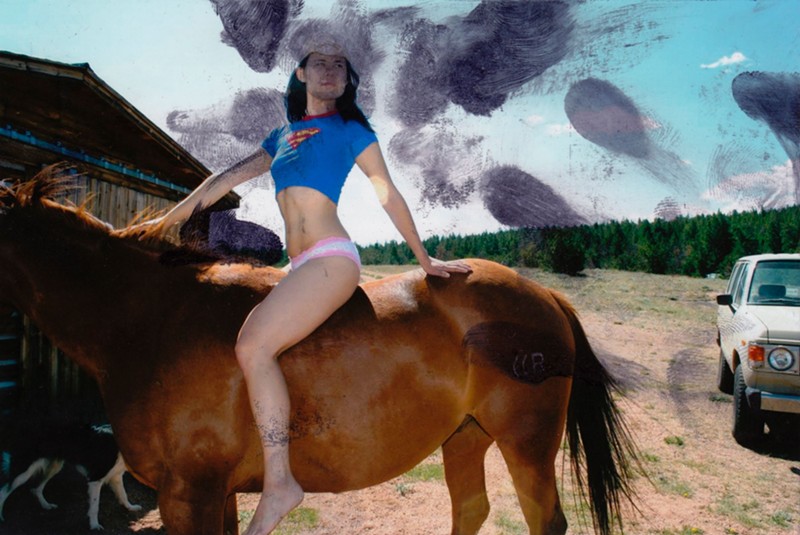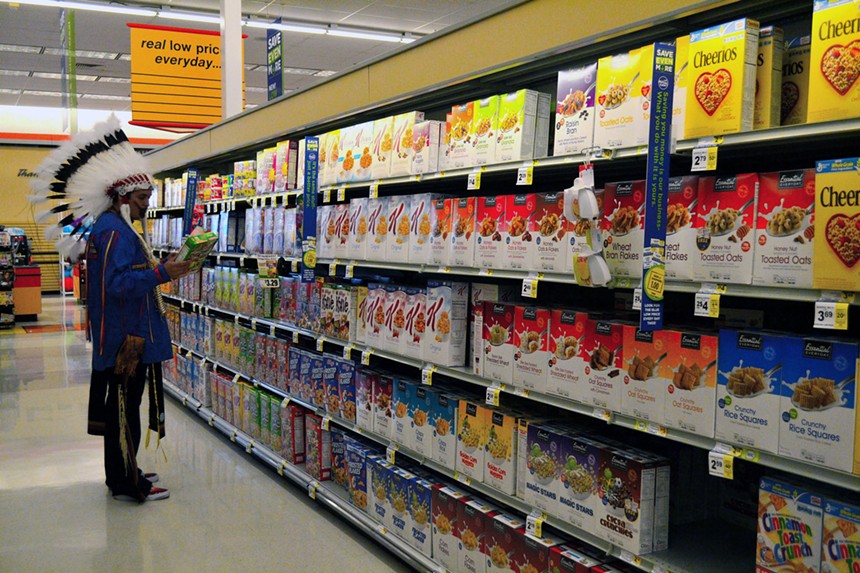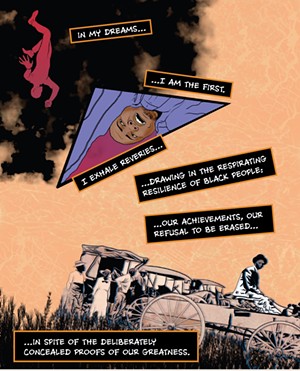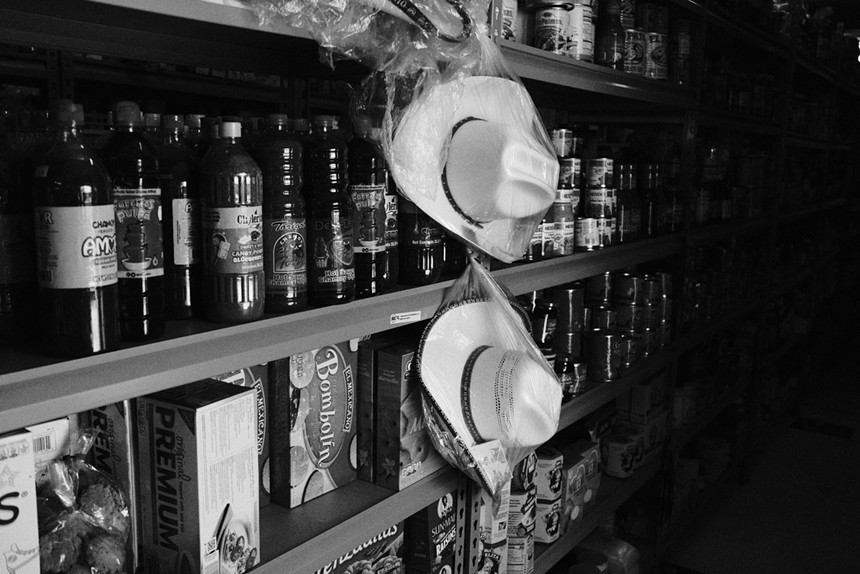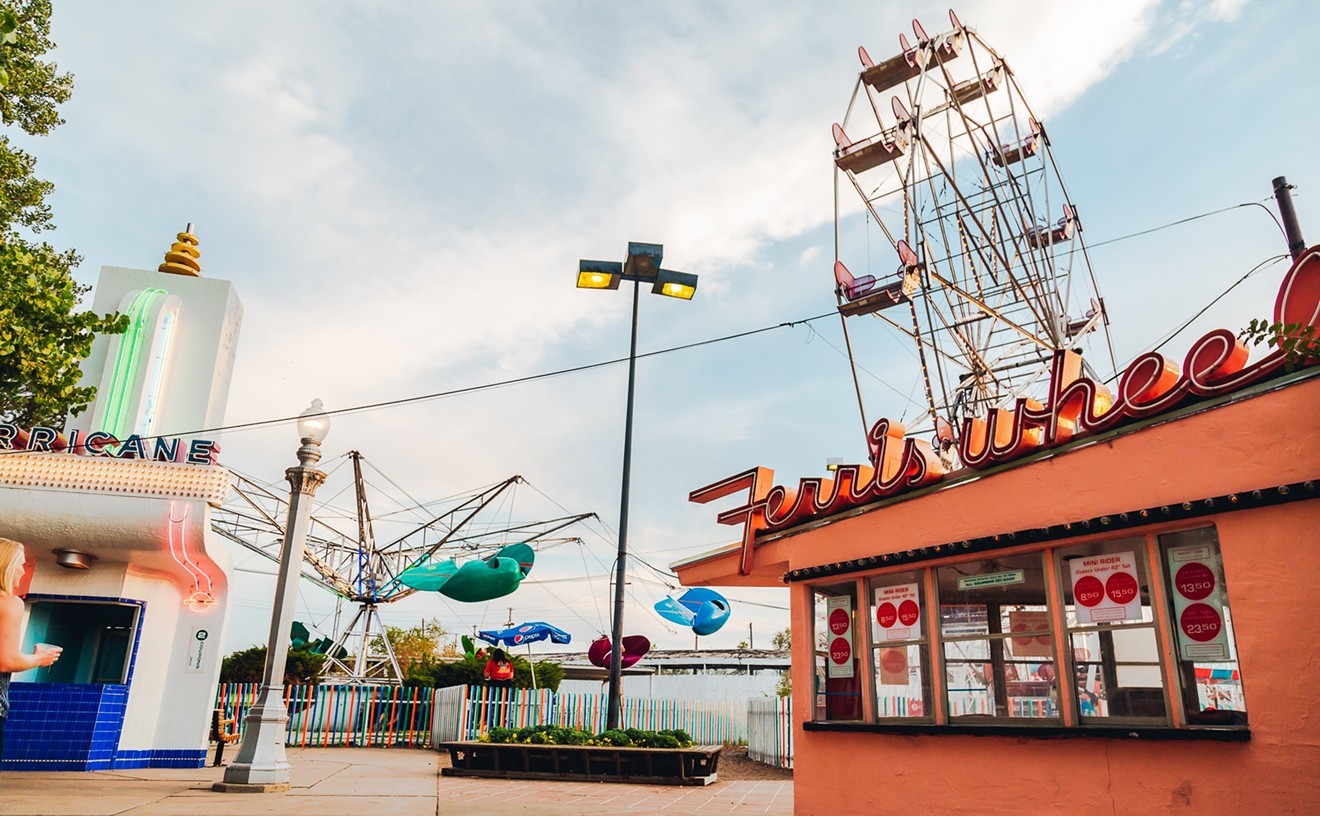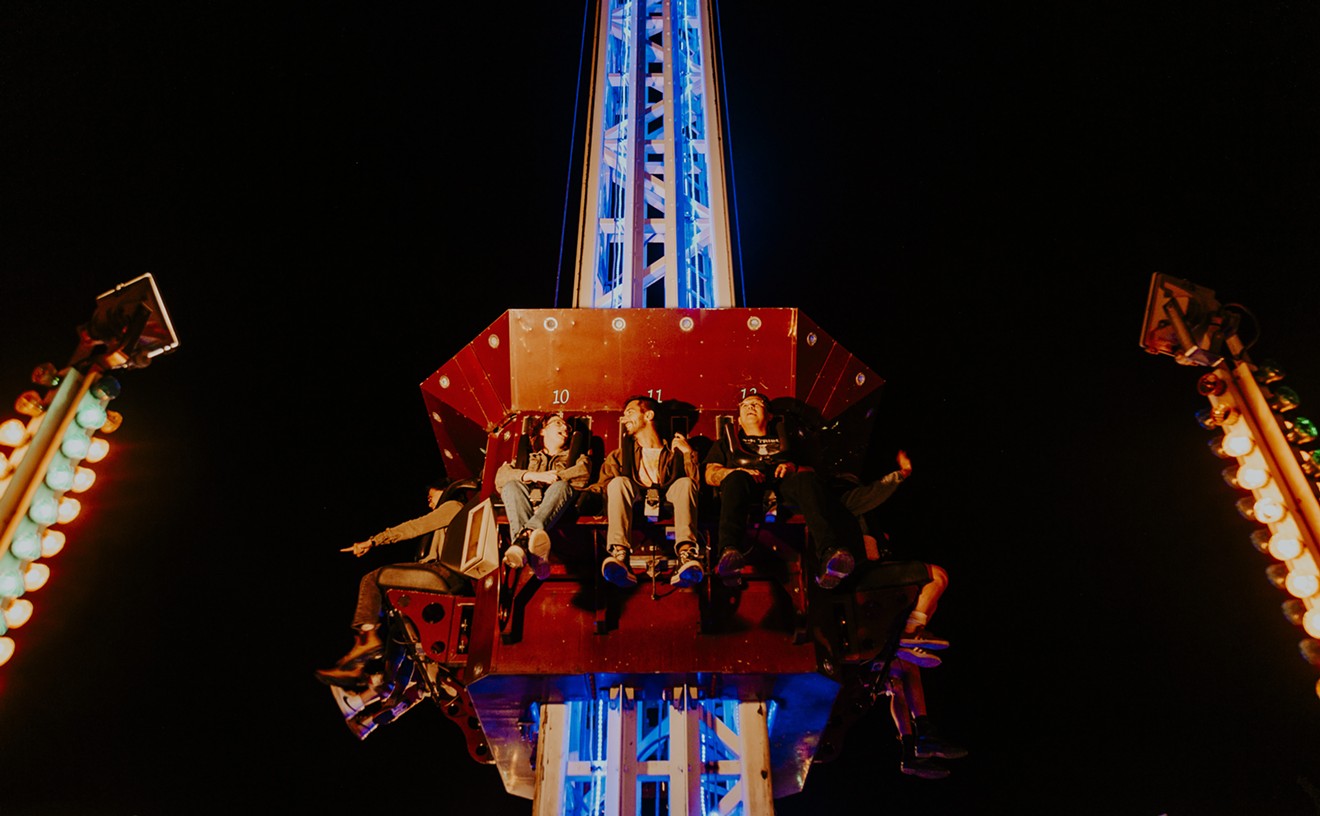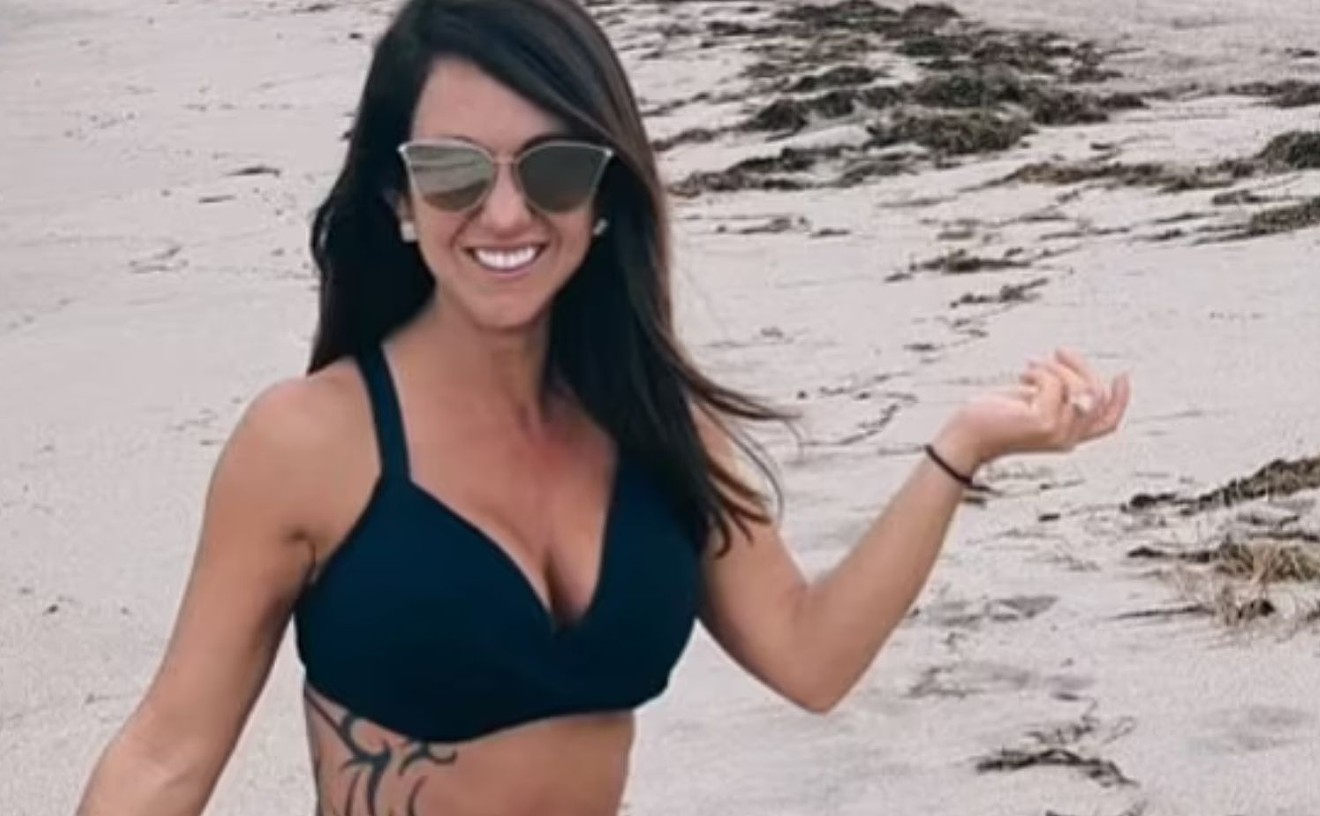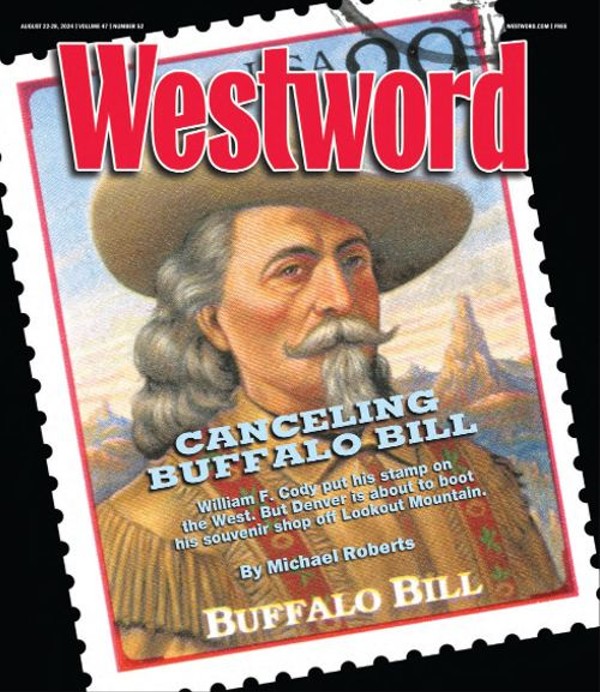The image of the cowboy is purely American. From early 1900s pulp novels, 1940s Western movies and 1950s singing cowboys to Buffalo Bill Cody, John Wayne, the Marlboro Man, Ronald Reagan, Gunsmoke and Yellowstone, cowboys have captured the hearts of Americans — and represented the country to the world. Despite its origins in the Mexican vaquero, the character of the cowboy is, for all intents and purposes, America personified.
That tradition — multi-layered and internationally recognized — is the focus of MCA Denver’s new exhibition, Cowboy, which turns a critical eye on exactly how the American myth has been translated through different artistic lenses. It rounds up both loans and new commissions from 27 artists across the globe, including Asian American, Latinx and Native perspectives.
Nora Burnett Abrams, the MCA's Mark G. Falcone director, says she looked for ways to “surface the stories, histories and narratives that would have a particular resonance here” in Colorado. One of the themes she landed on, with the help of Ellen Bruss Senior Curator Miranda Lash, was the idea of the Black cowboy. It was something Abrams had seen at New York City’s Studio Museum in Harlem back in 2017. “I thought, 'Wow. The history of the Black cowboy is going to land so differently in NYC than it would in Denver,'” Abrams recalls.
To expand on the idea locally, the pair decided to “open it up and tell not only the story of the Black cowboy, but really the story of the cowboy, which is fundamentally one that’s tremendously diverse and rich and complicated and messy," Abrams explains. "And quite different, frankly, from the very narrow view of the cowboy that pop culture has put forward over the last hundred-plus years.”
But how to address such a huge symbol of the American West? “The cowboy is such a powerful icon, and icons inevitably are larger-than-life figures. But in a sense, they’re also kind of empty," Abrams says. "They’re an idea, but they’re not concrete. What we wanted to do was to find that substance, to substantiate the myth. To name it and counter it, to expose it as myth.”
Lash says that her excitement for the exhibition is also personal. “I grew up in Los Angeles,” she recalls, “and uncles and cousins would be wearing cowboy hats, but they wouldn’t call themselves cowboys. They’d call themselves vaqueros. My grandmother loves the classic charro films, that idea of the Mexican cowboy. I was just fascinated by the questions that came up in our development of this idea. What does the cowboy life entail? And who gets to call themselves a cowboy?”
As much as Colorado has to speak to the cowboy myth, the MCA’s exhibition is much broader than that — so much so that the curators hope to take it to museums in other states. “We have artists based in Oklahoma, Utah, Texas, California, Mexico, even Korea," Lash says. "It’s really about the idea writ large, even though we do have quite a few Colorado artists in the show. It was important for us to include great Colorado voices.” Lash mentions Pyramid Lake Paiute Tribe artist Gregg Deal, “an amazing artist talking about his own relationship to the idea of the cowboy and envisioning an Indigenous future not dominated by settler colonialism. That’ll be a brand-new performance piece, along with an installation of the ephemera from the performance.”
Another local contributor is R. Alan Brooks, a Regis University professor, artist and writer, as well as a comic-book creator. “His contribution is fantastic,” Abrams says. “It’s a surrealist, almost futurist piece on the history of Dearfield, Colorado, which was the first Black homesteading community in the state. That’s one work that’s very specific to the history of Colorado."
Brooks credits Denver's Black American West Museum, which has an exhibit dedicated to Dearfield, for the idea. “I wrote and drew this story based on original photography from this historic town," he says. "It was pretty dope.”
Dearfield is in Weld County, not far from Greeley, and despite having been abandoned in the 1940s, still has a few remaining structures, including a long-shuttered diner and the original home of the town’s founder, Oliver Toussaint Jackson. Jackson, a successful Boulder businessman, started the community in order to create a colony for African Americans around 1910, and by 1920, the town had grown to almost 300 residents. In the end, drought and the Great Depression proved too much for Dearfield — but Brooks brings it back in his piece, “A Dream to Dearfield.”
The exhibit also attempts to address how cowboys were different or alike based on region, Abrams says. "One of the artists whose work is also included is Juan Fuentes,” she notes. “His photo series that we’re including selections from documents the changing landscape of Bennett, Colorado, which is really informed by the changing dynamics of the immigrant community. Caring for animals, caring for the land — these things that we think of as connected to the cowboy. Ranching, farming, agricultural work and labor.
"On the one hand, this is all very specific to Bennett, Colorado, but on the other hand, the issues he’s working to raise are ones that are common to others across the country," she continues. "It engages in a way with another work, a three-channel film installation by Kahlil Joseph looking at this community in Oklahoma called Grayson. It has a longstanding Black rodeo. It’s really about honoring that — the labor, the tradition, the ritual. Endowing it with the monumentality it’s due. So even when we’re looking at specific communities, the artists we’ve gathered have really done so in order to look at the larger questions germane to the cowboy much more broadly.”
“It’s been such a humbling process,” adds Lash, “to talk with artists like Nathan Young, who comes from a lineage of Indian cowboys. To learn about the Pawnee rodeo stars in Oklahoma, which flies in the face of the classic and dated game of cowboys and Indians, one versus the other, always in conflict.”
Abrams says she thinks the cultural popularity of the cowboy, from dime novels to modern movies, comes from everything swirling in the country’s experience as a whole. “It was born in this moment in American history where you have the trauma of the Civil War, the trauma of the battlefield, and you also have the anxiety around industrialization and the rapidity of change that wrought. The end of 'open range' ranching with the development of barbed wire. And a variety of other things that humans interacted with animals and the land. How that ecosystem worked was being massively disrupted, to say nothing of the people who occupied the land that settlers were taking over. The idea of the West presented a salve for those who were privileged enough to view it that way.
“So the West has always lingered in a certain American mindset,” Abrams claims, “as a space for invention, of possibility, of opportunity, of freedom, even if that wasn’t a view accessible to everyone. That has never dislodged from popular culture. Hollywood and other media affirmed that myth, and with every iteration, the myth got narrower and narrower, but also sharper and sharper.”
Why now, in terms of this look at the cowboy? “We’re at a moment of tremendous historical anxiety, fear and trauma,” says Abrams. “It’s not surprising to me that these things are bubbling up again.”
Lash agrees. “The 1950s cowboy came from the depths of the Cold War,” she says. “It’s something America can claim — this pillar of identity, bravery and strength and entrepreneurship and survival. All the things we hold dear. It’s no coincidence that we’re coming around again now, after COVID and all the uncertainty in recent years. It resurfaces. And then the question comes: What are we going to do with that? How do we understand it, and how does art push against it? How do we see the American cipher that is the cowboy? It’s us. Let’s look at it.”
Cowboy opening reception, 6-10 p.m. Friday, September 29, MCA Denver, 1485 Delgany Street. Tickets range from $29 to $59. Cowboy will remain on display through February 18, 2024. For more information, see the MCA Denver website.

Audio By Carbonatix
[
{
"name": "Air - MediumRectangle - Inline Content - Mobile Display Size",
"component": "12017618",
"insertPoint": "2",
"requiredCountToDisplay": "2",
"watchElement": ".fdn-content-body",
"astAdList": [
{
"adType": "rectangle",
"displayTargets": "mobile"
}
]
},{
"name": "Editor Picks",
"component": "17242653",
"insertPoint": "4",
"requiredCountToDisplay": "1",
"watchElement": ".fdn-content-body",
"astAdList": [
{
"adType": "rectangle",
"displayTargets": "desktop|tablet"
},{
"adType": "rectangle",
"displayTargets": "desktop|tablet|mobile"
}
]
},{
"name": "Inline Links",
"component": "18838239",
"insertPoint": "8th",
"startingPoint": 8,
"requiredCountToDisplay": "7",
"maxInsertions": 25
},{
"name": "Air - MediumRectangle - Combo - Inline Content",
"component": "17261320",
"insertPoint": "8th",
"startingPoint": 8,
"requiredCountToDisplay": "7",
"maxInsertions": 25,
"watchElement": ".fdn-content-body",
"astAdList": [
{
"adType": "rectangle",
"displayTargets": "desktop|tablet"
},{
"adType": "rectangle",
"displayTargets": "desktop|tablet|mobile"
}
]
},{
"name": "Inline Links",
"component": "18838239",
"insertPoint": "8th",
"startingPoint": 12,
"requiredCountToDisplay": "11",
"maxInsertions": 25
},{
"name": "Air - Leaderboard Tower - Combo - Inline Content",
"component": "17261321",
"insertPoint": "8th",
"startingPoint": 12,
"requiredCountToDisplay": "11",
"maxInsertions": 25,
"watchElement": ".fdn-content-body",
"astAdList": [
{
"adType": "leaderboardInlineContent",
"displayTargets": "desktop|tablet"
},{
"adType": "tower",
"displayTargets": "mobile"
}
]
}
]

